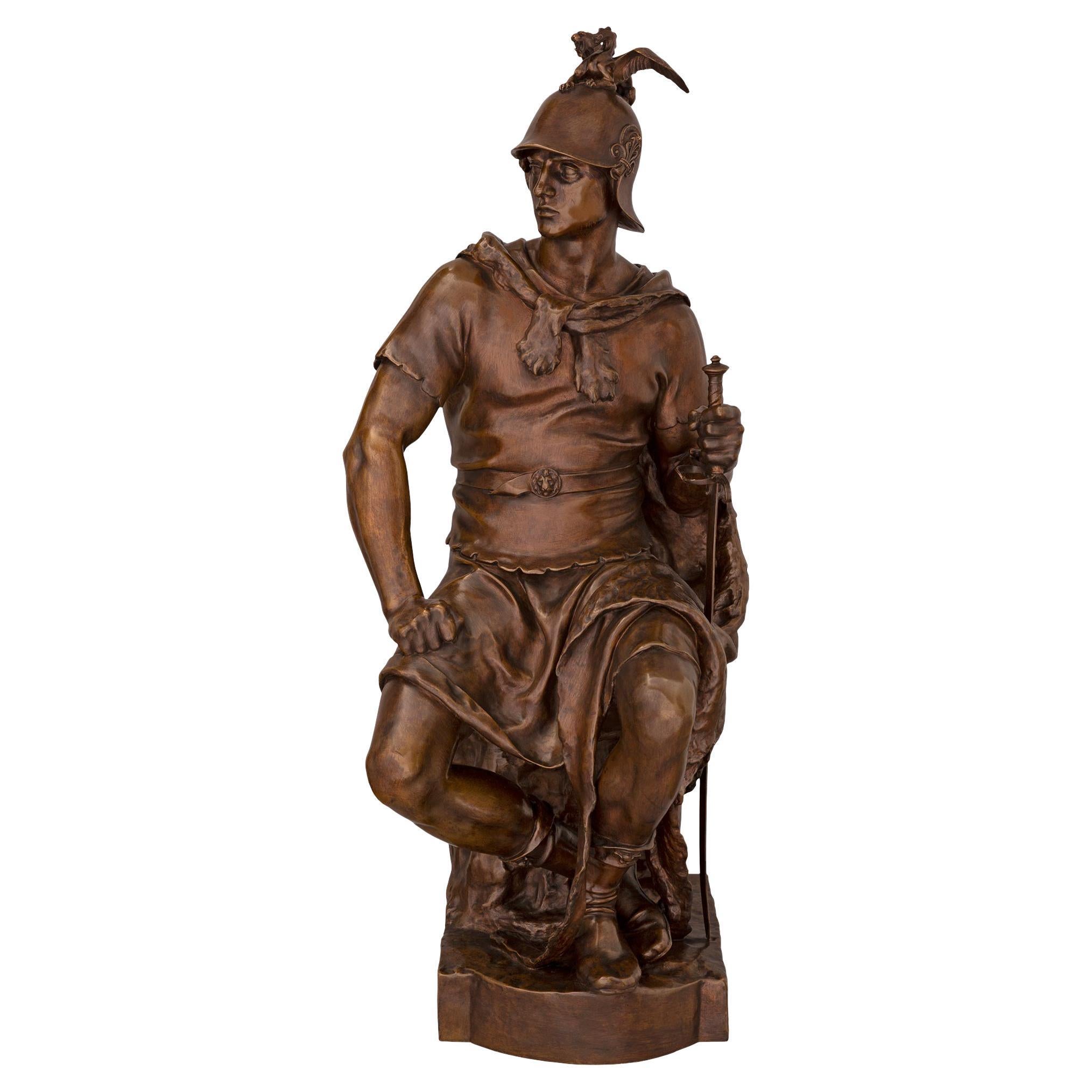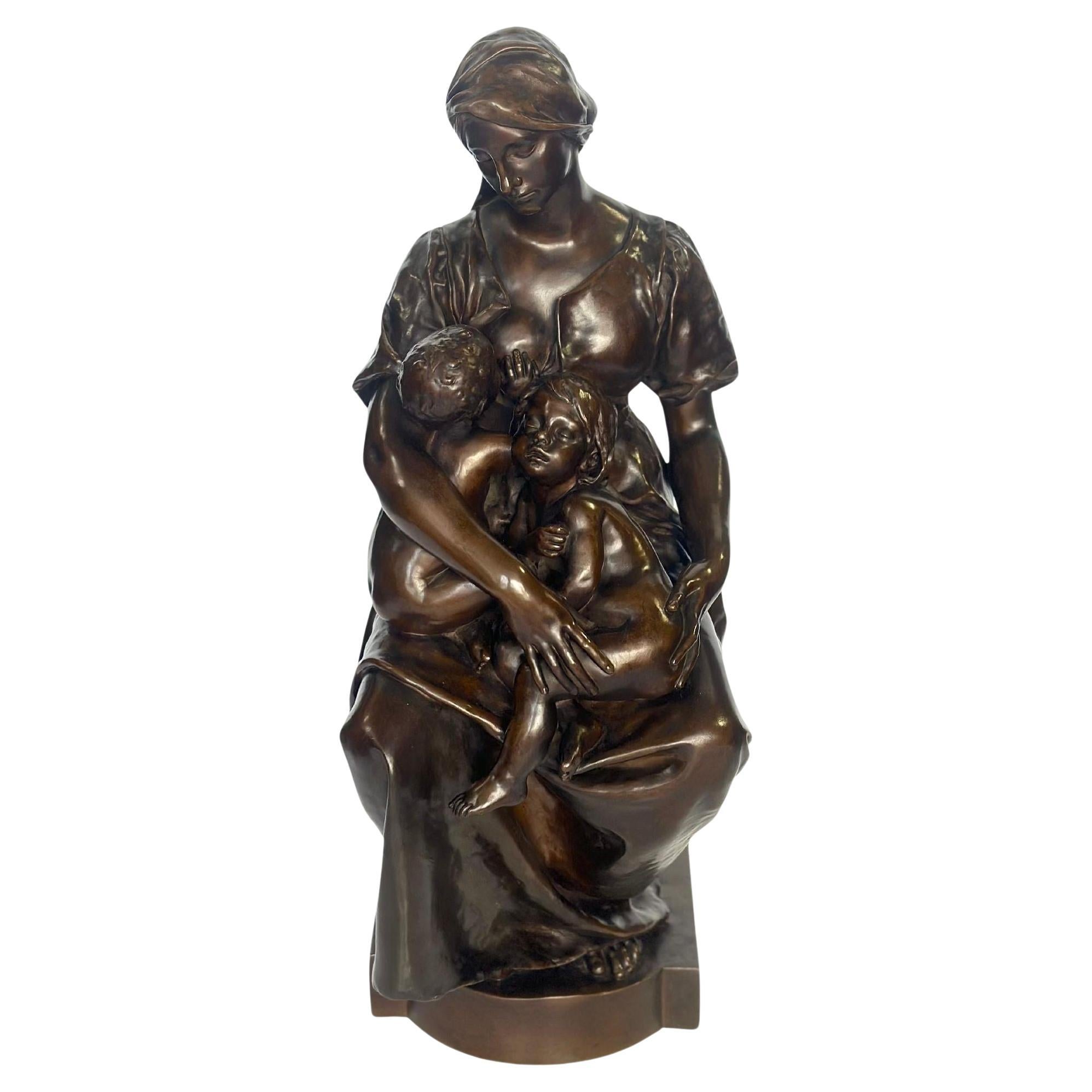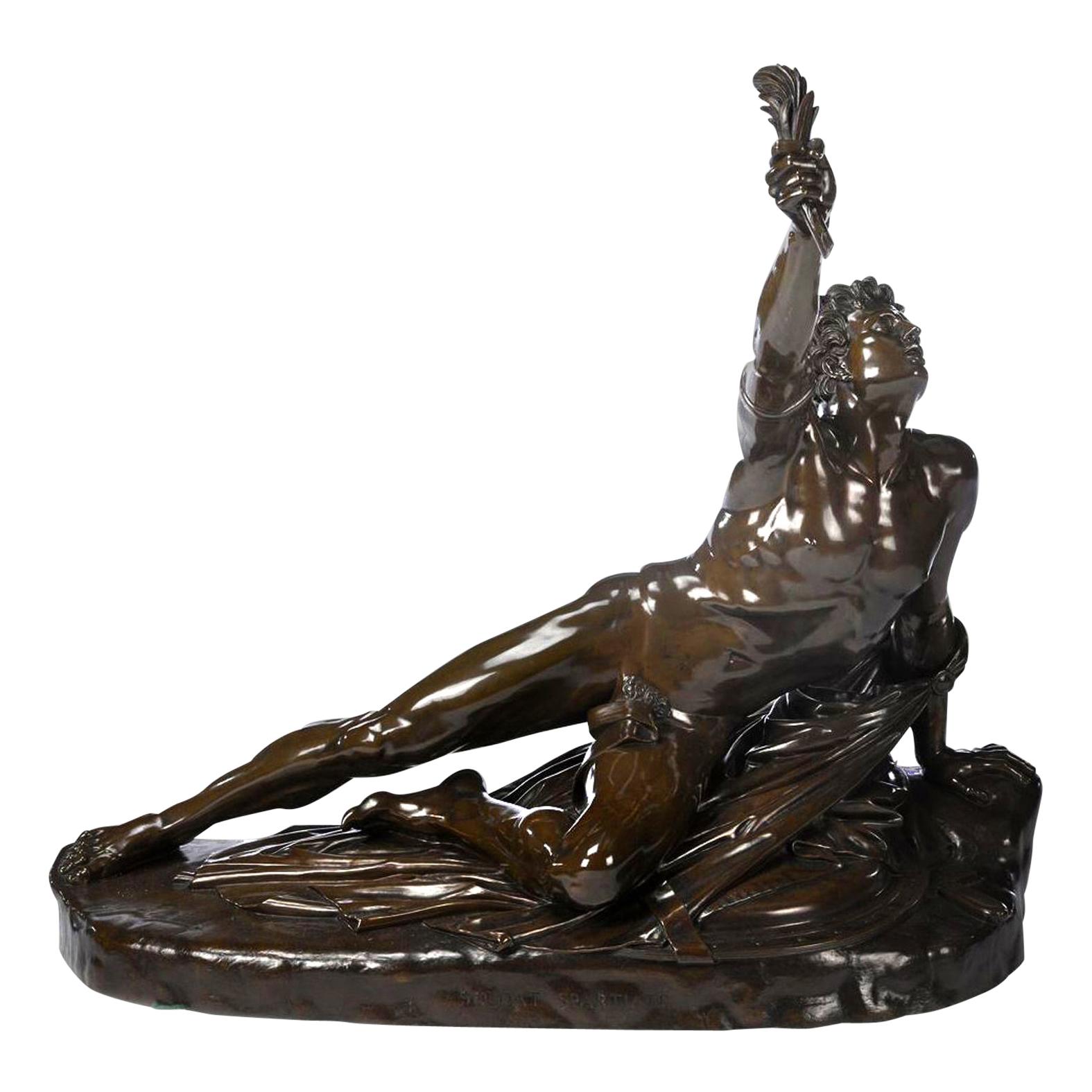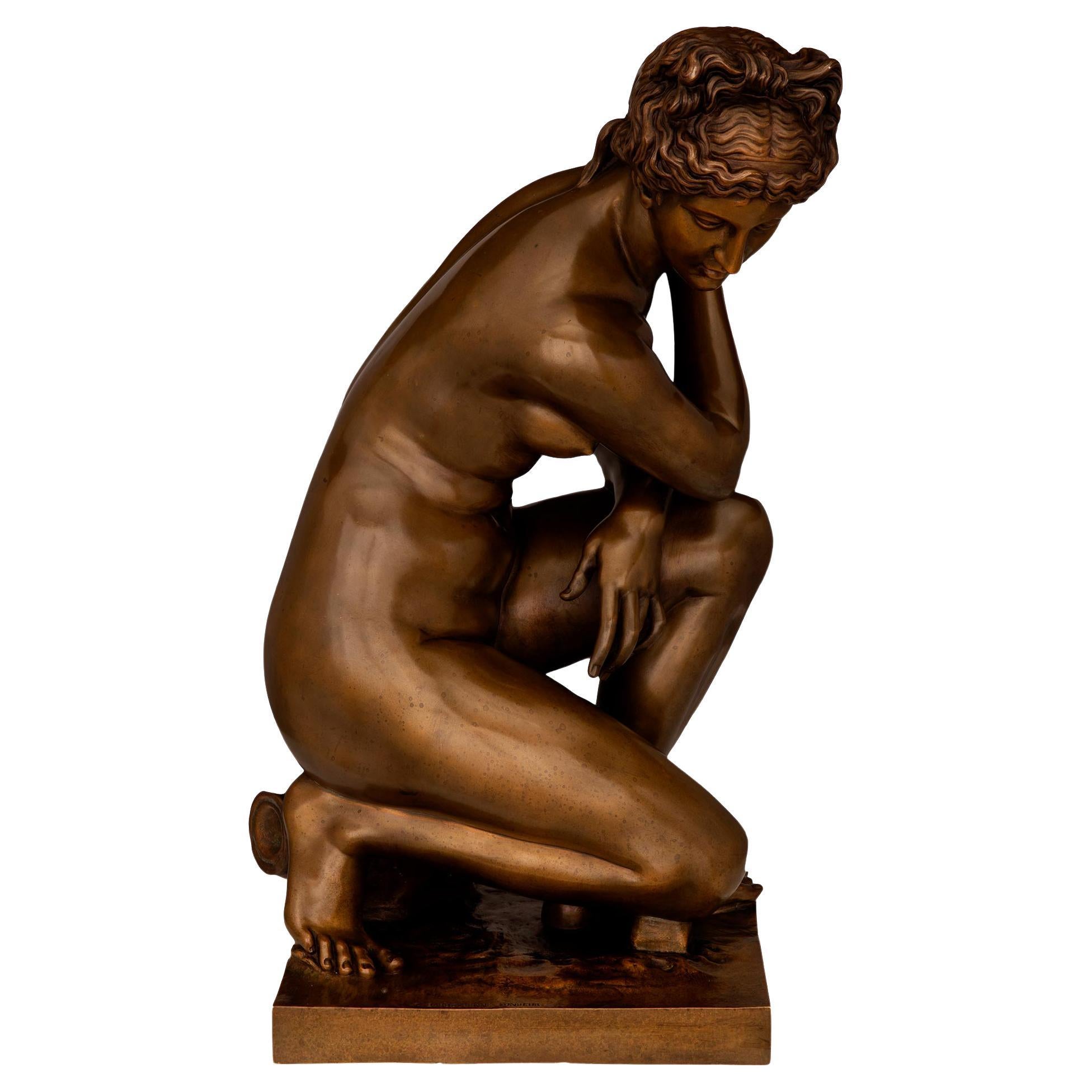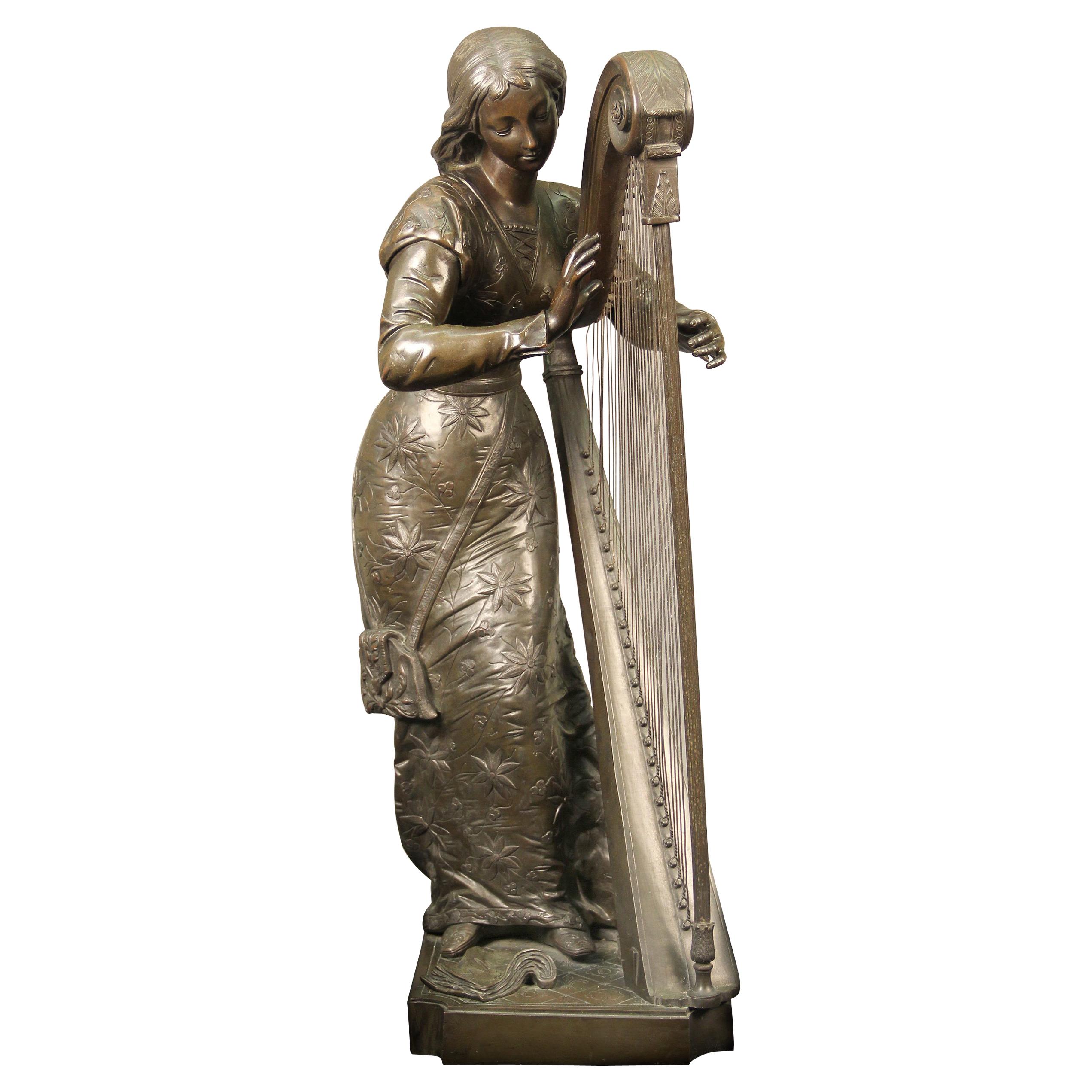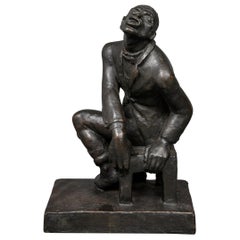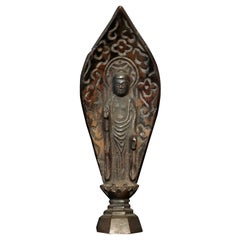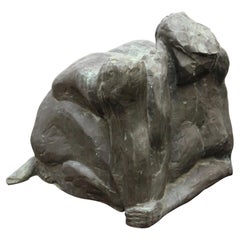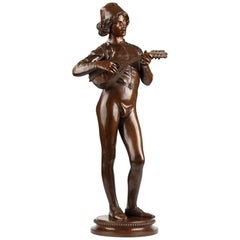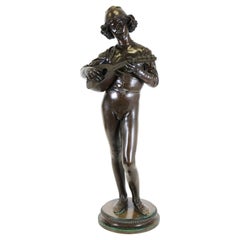
P. Dubois & Barbedienne 'Florentine Singer' French Romantic Period Cast Bronze
View Similar Items
Want more images or videos?
Request additional images or videos from the seller
1 of 14
P. Dubois & Barbedienne 'Florentine Singer' French Romantic Period Cast Bronze
About the Item
- Creator:Paul Dubois (Sculptor),Ferdinand Barbedienne (Metalworker)
- Dimensions:Height: 36.5 in (92.71 cm)Diameter: 15 in (38.1 cm)
- Style:Romantic (Of the Period)
- Materials and Techniques:
- Place of Origin:
- Period:
- Date of Manufacture:Late 19th Century
- Condition:Wear consistent with age and use.
- Seller Location:New York, NY
- Reference Number:Seller: S138XX - 79685 - 08211stDibs: LU889324984442
About the Seller
4.9
Vetted Seller
These experienced sellers undergo a comprehensive evaluation by our team of in-house experts.
1stDibs seller since 2010
2,433 sales on 1stDibs
Typical response time: 2 hours
More From This SellerView All
- Helene Sardeau French Art Deco Jazz Singer Cast Bronze SculptureBy Helene SardeauLocated in New York, NYHelene Sardeau (Belgian-American, 1899-1968) Art Deco cast bronze sculpture of a jazz singer, signed and dated 1928 with mark from the Valsuani foundry in ...Category
Vintage 1920s French Art Deco Figurative Sculptures
MaterialsBronze
$6,000 Sale Price20% Off - Japanese Momoyama Bronze Cast Buddha SculptureLocated in New York, NYJapanese Momoyama period solid bronze cast diminutive Buddha sculpture. The piece dates from the 16th-17th century, circa 1450-1500, and is in remarkable condition with age-appropria...Category
Antique 15th Century and Earlier Japanese Metalwork
MaterialsBronze
- Modern Abstract Cast Bronze Female SculptureLocated in New York, NYModern abstract sculpture cast in bronze, depicting a crouching woman. In very good vintage condition. Dealer: S138XXCategory
Late 20th Century Modern Figurative Sculptures
MaterialsBronze
- Japanese Meiji Period Bronze Elephant Sculpture on Burlwood BaseLocated in New York, NYA Japanese Meiji period bronze elephant sculpture on its original burl-wood base. Old repair to the tail; some paint chips to bronze trunk; unsigned.Category
Antique 1880s Japanese Meiji Animal Sculptures
MaterialsBronze
- French Grand Tour Borghese Gladiator in Cast MetalLocated in New York, NYMonumental French late 19th century Grand Tour heavy cast metal sculpture of the Borghese Gladiator. The piece depicts a swordsman during fight and is a cast reproduction of the fame...Category
Antique 1880s French Grand Tour Figurative Sculptures
MaterialsMetal
$6,800 Sale Price20% Off - Antique Meiji Period Japanese Bronze of an Old Man (Jerodian)Located in New York, NYAn antique Japanese bronze sculpture depicting an old man with walking staff. The piece dates from the Meiji period (1868-1912). 4608Category
20th Century Japanese Sculptures
MaterialsBronze
You May Also Like
- "Florentine Singer" Bronze Sculpture by P. Dubois and F. Barbedienne, Circa 1880By Ferdinand Barbedienne, Paul DuboisLocated in PARIS, FRSigned P. Dubois 1865 and F. Barbedienne fondeur Stamped with réduction mécanique Collas A patinated bronze « Florentine Singer » sculpture, inspir...Category
Antique 1880s French Figurative Sculptures
MaterialsBronze
- Paul Dubois-Barbidienne, Florentine Singer, French Bronze Sculpture, circa 1869By Paul DuboisLocated in New York, NYPaul Dubois & F. Barbidienne Fondeur, Florentine singer, French bronze sculpture, circa 1869 Signed by the artist, P.DVBOIS, and dated: 1869. Fo...Category
Antique 1860s French Romantic Figurative Sculptures
MaterialsBronze
- French 19th Century Patinated Bronze Statue Signed P. Dubois And F. BarbedienneBy Ferdinand BarbedienneLocated in West Palm Beach, FLAn exceptional French 19th century patinated bronze statue signed P. Dubois and F. Barbedienne. The statue entitled Le Courage Militaire, is raise...Category
Antique 19th Century French Figurative Sculptures
MaterialsBronze
- Huge Antique P. Dubois. F. Barbedienne Bronze Soldier SculptureBy F. Barbedienne FoundryLocated in LOS ANGELES, CAHuge Antique P. Dubois. F. Barbedienne Bronze Soldier Sculpture.Category
Antique 1890s French Renaissance Busts
MaterialsBronze
- "The Mother" Bronze Sculpture by P. DuboisBy Paul DuboisLocated in Los Angeles, CA"The Mother" is a remarkable patinated bronze sculpture created by the renowned French artist, Paul Dubois. This masterpiece captures the essence of maternal love, depicting a mother...Category
Antique 1880s French Figurative Sculptures
MaterialsBronze
- ‘Gloria Victis’, A Patinated Bronze Figural Group by Mercié, Cast by BarbedienneBy Ferdinand BarbedienneLocated in Brighton, West SussexA Patinated Bronze Figural Group of ‘Gloria Victis’ (‘Glory to the Vanquished’), Cast by Ferdinand Barbedienne from the Model by Marius-Jean-Antonin Mercié (French, 1845-1916). ‘Gloria Victis’ (‘Glory to the Vanquished’). Bronze, gilt and dark brown patina. Signed 'A. Mercié', with foundry inscription 'F. BARBEDIENNE, Fondeur. Paris.' and A. Collas reduction cachet. The integral base titled 'GLORIA VICTIS'. This cast is part of a limited edition by the Barbedienne Foundry. France. Circa 1880. ‘Gloria Victis’ is one of the most recognisable and important works of sculpture of the nineteenth century and a definitive image of France’s historic national identity. The figure of glory, winged and wearing armour, carries a dying young warrior heavenwards towards fame and immortality. The compositional daring of the group must be admired for balancing two figures on the minimal support of one foot, wings spread in the moment before taking flight. Mercié was a student at the French Academy of Rome when the Prussians invaded France in 1870. Shortly after the war had begun, he executed a group depicting the figure of Fame supporting a victorious soldier. When news reached Mercié in Rome that the French had surrendered, he decided to alter his group, replacing the victorious soldier with a defeated casualty, thus transforming an allegory of ‘Glory to the Victors’ into one of ‘Glory to the Vanquished’. Completed in 1872, a year after the defeat of French soldiers against the Prussian army, the statue personifies a defeated but heroic France. The title is also a reversal of the famous formula, ‘Vae Victis’ (Death to the Vanquished), which the Gallic general Brennus exclaimed upon defeating the Romans in 390 BC. The figure of the fallen soldier was thought to represent Henri Regnault, a fellow sculptor of Mercié who was killed on the last day of fighting. Measuring 317 cm. high the original group of ‘Gloria Victis’ was unveiled in plaster at the Salon of 1872. It was bought by the City of Paris for the sum of twelve thousand francs and then cast in bronze by Victor Thiébaut for eight thousand five hundred francs. The bronze was exhibited at the Salon in 1875 and first placed in Montholon Square in the 8th arrondissement. In 1884 it was transferred to the courtyard of the Hôtel de Ville and in 1930, it entered the collection of the Musée du Petit Palais, where it can be seen to this day. The Thiébaut Frères foundry also cast Gloria Victis bronzes for the cities of Niort (requested 1881) Bordeaux (requested 1883), Châlons-sur-Marne (today, Châlons-en-Champagne; requested 1890), and Cholet (requested 1901). In 1905, the Danish brewer and art collector Carl Jacobsen was permitted to have an exact cast made of the original sculpture in Paris, on condition that the base was made 2 cm lower and bore the inscription “Original tilhører Paris By” (The original belongs to the City of Paris). It too was cast by the Thiébaut Frères foundry. Gloria Victis was one of Jacobsen’s most important and his last acquisition. Today it has been returned to its original position in the Winter Garden at Glyptoteket, Copenhagen, Denmark. The full-size plaster was shown again at the Paris Expositon universelle of 1878 alongside a bronze reduction by Barbedienne. By this time Antonin Mercié had entered into a commercial edition contract with the Ferdinand Babedienne foundry to produce bronze reductions of Gloria Victis, his most famous work. Gloria Victis is first recorded to have been produced in three sizes and by 1886 Barbedienne’s ‘Catalogue des Bronzes D’Art’ lists six sizes measuring 3/5, 9/20, 7/20, 3/10, 6/25 and 2/10, of the original. These reductions were produced by an invention of Barbedienne’s business partner Achille Collas. The Collas reducing machine was a type of complex mechanical pantograph lathe that enabled sculpture to be mathematically measured and transcribed to scale, in the round, thus making a reduced size plaster from which a bronze could be cast. Mercié's modern sculpture had become an instant classic, even receiving an entry in the Nouveau Larousse Illustré. The success of the group undoubtedly lay in the fact that it was admired not just on an aesthetic level, but also on a patriotic level, particularly in its commemoration of heroism in defeat. Immediately ‘Gloria Victis’ was recognised as a national artwork, capable of arousing patriotism and casts were ordered from Barbedienne as local memorials commemorating the war’s dead for cities across France. ‘Gloria Victis’ was considered so much a part of France’s national identity that for the 1900 Paris Exhibition, Ferdinand Barbedienne’s nephew Gustave Leblanc, loaned a bronze example to feature as part of l’Exposition centennale de l’art français. Literature: For an interesting account of the process of creating a reduction in bronze of the Gloria Victis by Barbedienne and illustrations of the casting and finishing of the bronze see: 'Ferdinand Barbedienne': Theodore Child; Harper's new monthly magazine, Volume 73, Issue 436, September 1886. ‘Contemporary French Sculptors’: The Century, Volume 33, Issue 3, Jan 1887. ‘Modern French Sculpture’: Harper's new monthly magazine, Volume 76, Issue 452, January 1888. S, Lami, ‘Dictionnaire des sculpteurs de l'Ecole française au dix-neuvième siècle’, Tome III. G.-M., Paris, 1914, p. 432. Peter Fusco and H.W. Janson, The Romantics to Rodin: French Nineteenth Century Sculpture from North...Category
Antique 19th Century French Figurative Sculptures
MaterialsBronze
Recently Viewed
View AllMore Ways To Browse
Collas Bronze
Ferdinand Barbedienne Fondeur
Dubois Bronze
Florentine Singer
Soldiers Carved
Marble Statuees Large
Italian Figure Baroque
Wood Carved Sculpture Of Woman
Hair Bow
Plaster Round
Wine God
Teaching Model
Foot Statues
Glass Hood
Marble Women Sculpture
Italian Carved Putti
Marble Italian 17th
Designer Art Deco Dresses


